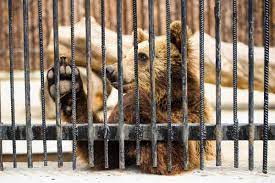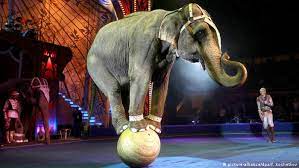Animals in Captivity- The Growing Public Awareness
Animals in captivity are being abused for the public’s expense.

Animals of different habitats and sizes are used for public entertainment at the expense of their overall health.
June 14, 2022
Overview
Animal cruelty has become one of the worlds most challenging issues. Animals of different habitats and sizes are used for public entertainment at the expense of their overall health. Zoos and aquariums are some of the most popular entertainment sites for people. They have various animals, ranging from common to nearly extinct, and offer varieties of species for people to sightsee. People go to these places to watch how the animals adapt, and also to see how they act around them. They are good friends to people, and we should care for them as they do for us.
Many families across the world own pets, some being dogs and others being animals like cats, snakes, hamsters, parrots, rabbits, etc. These families love their pets like they are worth their entire lives. People sadly don’t respect animals in captivity the same. They are treated as if they did something wrong, and some have little to no moving space in their new habitats.

Effects
Many animals in captivity suffer from illnesses, whether it’s from the lack of environment, food, sleep, etc. Many animals when in captivity lose their old way of life, and have to adapt to new habits that will help them survive in this new terrain. According to Stephanie Santana, a veterinarian, animals can capture a disease called zoochosis, where they run in circles and daydream. They also can get overly aggressive with their capturers and be seen as unbehaved creatures. These behaviors are things they would not do in their normal environments.

When people go to a local zoo or aquarium, they don’t realize this “form of entertainment” they are paying for is making conditions harder for the animals. Circuses are the best example of animal cruelty. Many are forced to wear certain clothes/outfits to appeal to people and some are required to perform specific tricks that will draw the fans attention. During the hours in captivity, they are barely fed and are mistreated by their owners who will poke them, shock them, and beat them unless they perform. These tricks are spectacular, however, still contribute poorly to an animals overall health.
Captivity Facts

These life changes are uncommon for animals, they want to grow in their true environments. Even during the animals “offseason”, they are put in small traveling crates where they suffer psychological effects. A great example of this is with orcas, whales that can swim on average 100 miles a day. When they are held in an aquarium, they can’t dive like they normally do and they swim in circles. According to the Animal Legal Defense Fund article, there are no prohibiting laws to the orcas containment, and it is for the purpose of “education” and public entertainment.
In their article on animal cruelty, writer Oliver Jones, a technician noted, the average circus animal is in captivity for 96% of their life. This means that four everyday that passes by, they will be held in a crate for more than 23 hours. The animals that look like they’re having fun are suffering the most, and they need people’s support.





